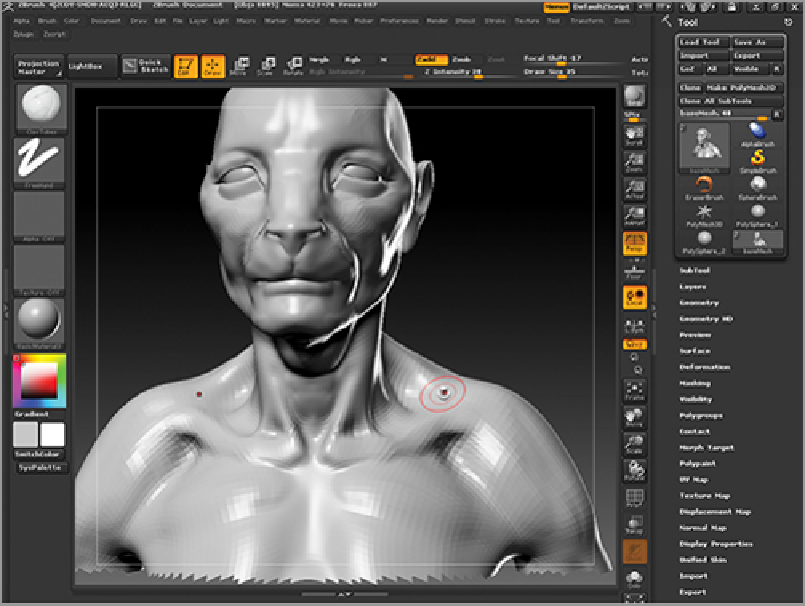Graphics Programs Reference
In-Depth Information
Figure 8-66:
Accentuate neck muscles
8.
Rotate to the back view and sketch in the scapulae (
Figure 8-67
)
. Also, be sure to add the bony landmark
of the seventh cervical vertebra. This is the prominent part of the spine that's at the base of the neck on
your back. The thinner a human is, the more pronounced this vertebra will become. It's also an important
visual landmark to place the other relevant muscles of the back.
9.
With the Standard brush on ZSub, I knick out a hollow between the two pillars of the trapezius muscles
where they attach to the base of the skull (
Figure 8-68
)
. Again, by catching a shadow here with this hollow,
you help add interest to the shapes of the back as well as a sense of anatomical veracity. While the view-
er may not know anatomy, they will have an instinctual eye for what “feels right,” as we observe people
every day. Accurate forms on a fantasy character are extremely important since they help add realism to
an otherwise fantastic form.
10.
With the Standard brush, I etch in a division between the sterna and clavicular heads of the pectoral
muscles (
Figure 8-69
)
. This kind of deep anatomical detail is only visible on one who is exceptionally fit
or old, as it is only visible when the fatty tissues between the muscles break down.
11.
Rotate to focus on the neck. Here I will use the Standard brush in conjunction with the Clay Tubes
brush to stroke across the anatomy that has already been sculpted in place. The idea is to create strokes
that traverse across the larger muscles and bones to give the impression of skin and tendons stretching
over the anatomy. By “obscuring” the shape of the clavicles, for example in the areas where the strokes
cross over the form, it gives the impression of a drape of skin over the bone. If the bone were clearly out-
lined with no “lost” edges, it would look sculpted and less interesting (
Figure 8-70
)
.
Figure 8-67:
Sketching in the scapulae

Search WWH ::

Custom Search